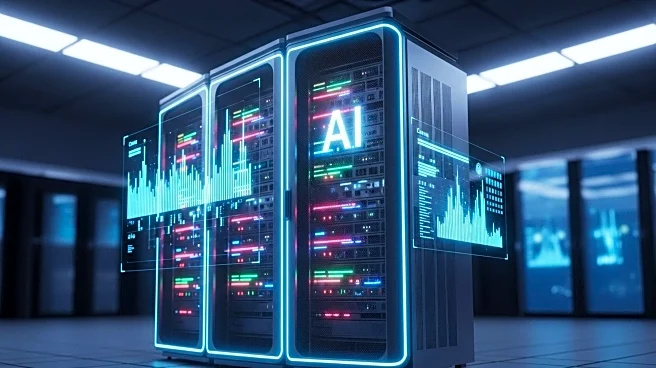What's Happening?
Residential electricity costs in the United States have risen significantly, with the average price increasing by 13% since 2022, according to the US Energy Information Administration (EIA). This surge
is attributed to the costs of updating and maintaining the power grid, exacerbated by severe weather events. Additionally, the growing demand for electricity from data centers, fueled by the AI boom, is contributing to higher costs. Tech giants like OpenAI and Broadcom are investing heavily in AI infrastructure, leading to increased electricity consumption. Data centers are projected to consume up to 12% of U.S. electricity by 2028, up from 4.4% in 2023.
Why It's Important?
The rise in electricity costs has significant implications for U.S. consumers, particularly in regions like the Pacific, Middle Atlantic, and New England, where increases are expected to exceed the national average. The AI industry's demand for power is straining the existing infrastructure, necessitating further investment in electricity generation and transmission. This situation could lead to higher consumer prices and impact household budgets, especially in areas near data centers. The shift to electric-based heating systems and new manufacturing plants also contributes to increased demand, highlighting the need for strategic energy planning.
What's Next?
As the demand for AI services continues to grow, further investment in data center construction and upgrades is expected. This will likely lead to increased electricity consumption, necessitating more robust infrastructure to support the power needs. States like Oregon are taking steps to ensure data centers pay for their impact on the electrical grid, potentially preventing costs from being passed on to consumers. The ongoing development in AI technology will require careful management of energy resources to balance growth with consumer affordability.
Beyond the Headlines
The rapid expansion of AI technology raises ethical and environmental concerns, as increased electricity consumption contributes to carbon emissions and environmental degradation. The need for sustainable energy solutions becomes more pressing as the tech industry continues to expand. Policymakers and industry leaders must address these challenges to ensure that technological advancements do not come at the expense of environmental health and consumer welfare.













